The Sonic the Hedgehog series meant a tremendous amount to me, and my family. The love we had for the character was sometimes hard to put it into words. Like many of you we played the titles, watched the cartoons, films, and collected the toys. Moreover the people at Sonic Team greatly influenced me as a gamer, and as an artist. Contrary to what some of my friends might have thought I was not blindly loyal to the character, especially his appearance in sequels. I didn’t know it at the time but I was sensitive to the titles not produced directly by Sonic Team. My friends in high school knew that the first two games were among my absolute favorites. They wondered why I was highly critical of the rest of the sprite-based games. I told them there were a number of small details that bothered me. Things like character designs, animation, levels, and even music felt odd. I couldn’t pin it down but something didn’t feel “right” to me.
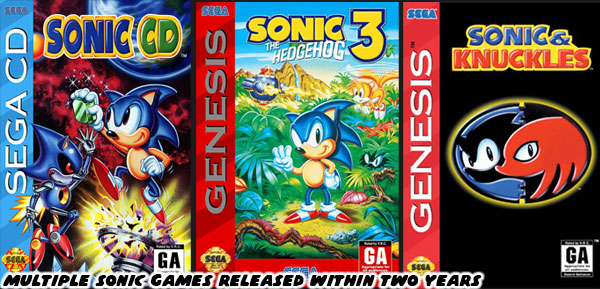
Many of my friends couldn’t really see or feel a difference. I thought that the flood of titles after Sonic 2 weren’t innovative enough, they felt like a cash grab from Sega. The original Sonic came out June 23, 1991. The sequel on November 21, 1992. Sonic CD, came out on September 23, 1993. Sonic the Hedgehog 3 came out on February 2, 1994, and Sonic & Knuckles on October 18, 1994. You could see the development cycle getting shorter, and shorter. Any seasoned gamer could tell you that the games rushed to market often suffered. It was impossible to think of a series that got better with a less than a one year development cycle between sequels.
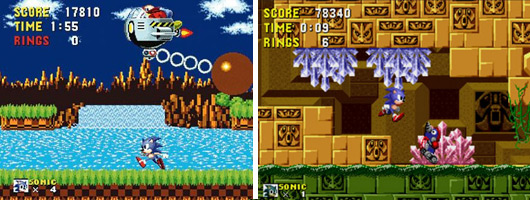
I didn’t know it at the time, but Sonic Team didn’t really produce most of the other 16-bit games after Sonic 2. Many of them were developed by the Sega Technical Institute in the USA. When I found that out the odd feeling that the other games gave me made more sense. They didn’t feel like Sonic Team games because they weren’t made by Sonic Team. However that was not to say that other teams working at Sega in Japan, or the US couldn’t create a memorable Sonic game. Nor did it mean that collaborating with another studio would “weaken” the work of Sonic Team. If anything I could tell that the core members were trying to build something great, to flesh out the Sonic universe. In order to do that the Sonic Team needed to break out of their comfort zone, and try different things. One of which was the kiddie ride I mentioned yesterday. Waku Waku Sonic Patrol Car came out in December 1991. That was just six months from the release of the first game.
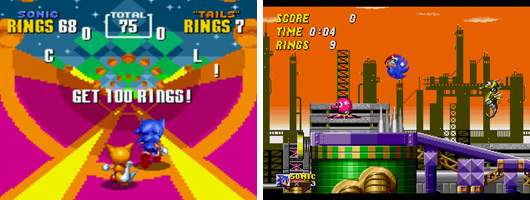
Granted the Waku Waku games were very simplistic, however Sonic Team had to work alongside Sega’s arcade developers. The fact that they could crank out a fun game in such a short amount of time was nothing short of genius. Yuji Naka was often credited as being that genius. It was often said that he coded closely to the hardware. He got more performance out of every development kit he was put in front of. This ability was obvious while working on the 32-bit Sega Saturn, especially when compared to every other developer. In some instances Mr. Naka was able to create game effects that baffled the engineers. This allowed him to climb the ranks of the company. He supervised some of the other teams working on spin-off games. He was sometimes described as being arrogant, standoffish, and even rude to his American colleagues. Many thought it was because he thought most of them as inferior programmers.

The proof of Naka’s genius was undeniable. The actual Sonic Team handed most of Sonic’s 2D development over to other groups because they wanted to start working in 3D for the Sega Saturn, and later on for the Sega Dreamcast. By then it was undeniable that Naka was even better at 3D programming than just about anybody else at the company. Yet before the studio went to 3D I could get a sense as to where they wanted to grow the franchise. The clue was in Sonic the Hedgehog 2. The introduction of a sidekick character, Miles “Tails” Prower, meant that entirely new mechanics were possible in the platformer. Speed was Sonic’s gimmick, flight was Tails’. Each ability meant that exploring the Zones would make each play through unique. This was as opposed to the Mario Bros. as the game play between Mario, and Luigi was essentially the same. Knuckles would build on the concept of a different way to play the same game. He could glide, climb, and break down barriers. Yet there were two games that predated the introduction of Knuckles that needed to be acknowledged.
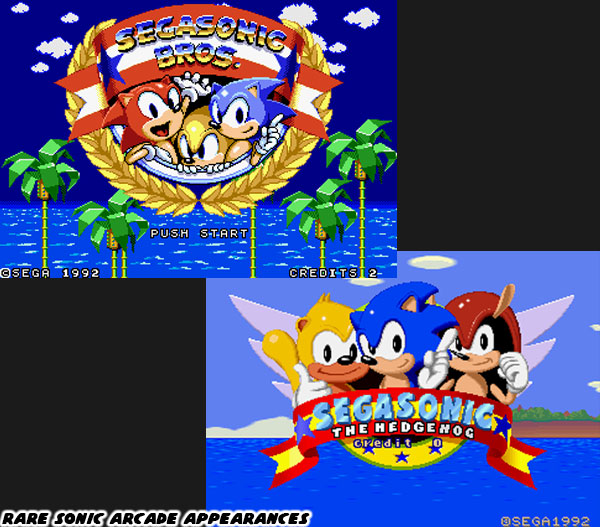
Sonic Team wondered aloud “What if Sonic wasn’t the only mascot character?” The first idea they had was for a gold, and red Sonic, collectively called the Sonic Bros.
SegaSonic Bros was a puzzle game in the vein of Columns scheduled for 1992. This game actually had some location tests in Japan, however people were disappointed that it wasn’t a platformer. I would argue that the ideas for a gold “Super” Sonic, and a red Sonic (Knuckles) were planted here. The next arcade title was more profound. SegaSonic the Hedgehog was an arcade game released June 1, 1993. It was developed by Sonic Team and Sega’s Hitmaker! group. The game returned to the trio idea with red, blue, and gold variations. This time it was Mighty the Armadillo, and Ray the Flying Squirrel designed by Manabu Kusunoki as the alternate colors. The 3-player game featuring a trackball, and single button were unlike any other arcade game out there. Electronic Gaming Monthly magazine called it the greatest arcade game ever made.
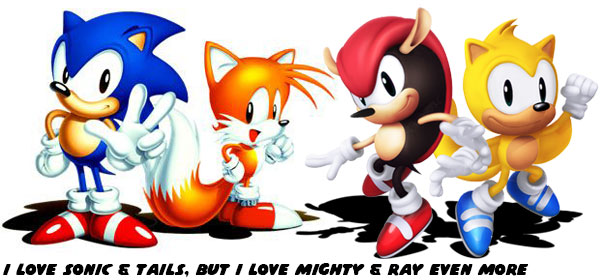
I was absolutely smitten with the designs of Mighty, and Ray. I got the sense that they were a more complete vision of the Sonic / Tails partnership. There was the stronger speedster, and the smaller flyer. Knuckles would debut a year later, and I felt that the character didn’t have the same charm as Mighty. Knuckles had hard edges, and an angular head. Which was opposite of the rounder, more classic cartoon designs that Naoto Ohshima produced. Years later I found out that my hunch about Knuckles was right. He wasn’t created by Mr. Ohshima, or Mr. Kusunoki but instead by Takashi Yuda and Pamela Kelly. Takashi,a nd Pamela didn’t quite grasp the simpler designs that made the Sonic heroes, and villains work.
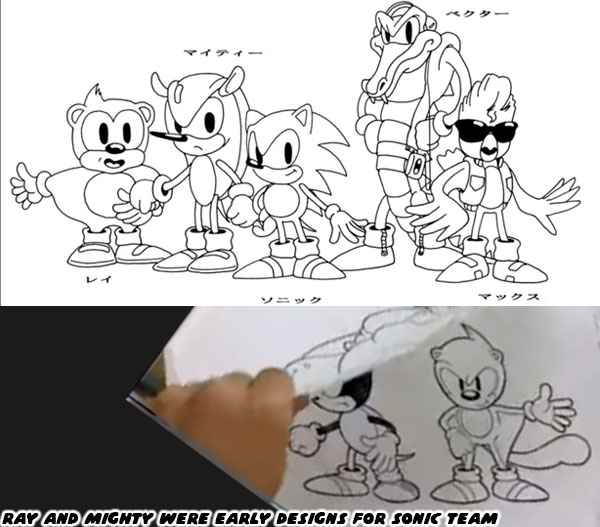
Over the years Sega, and Sonic Team would share their notes in interviews, and online. We could see that Ray, and Mighty went back to the earliest days of the franchise. They popped up in a few plans well before Knuckles was even drafted. Mighty would return in the Knuckles Chaotix game for the Sega 32X on April 21, 1995. Sadly Ray wouldn’t come back until 2017 in Sonic Mania. The reunion of the two characters, and their unique game play elements was a dream come true for me, and many others in the Sonic fandom. The game was a highlight reel of the best elements of every title, and made me rank Sonic Mania Plus (2018) as the only 2D platforming game better than Sonic the Hedgehog 2.
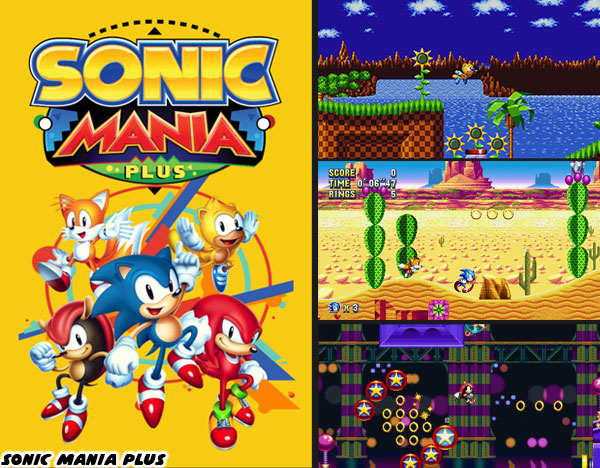
The designs from Naoto Ohshima spoke to me because of their classic roots. The large heads, skinny limbs, and pie-eyes were a callback to the “rubber hose” style of animation. Mr. Ohshima was creating mascots similar to the early 20th century stars like Felix the Cat, Oswald the Lucky Rabbit, and Mickey Mouse. Of all the eras of animation the 1920’s and 1930’s was my absolute favorite. Seeing a modern interpretation of that style with brighter colors, and fashion through Sonic, and his friends turned me into an instant fan. As the studio shared more of their notes we learned that Sonic was not originally going to be a hedgehog. Instead the first draft of the hero for the new game was a rabbit.

The cute rabbit went all the way back to 1990 with the formation of Sonic Team. This rabbit would become known as Feels the Rabbit. He was a happy-go-lucky character, but seemed to be missing some of the trademark Sonic “attitude.” It wasn’t enough to break the mold of a hundred other cute-but-forgettable mascots in gaming. Naoto went back to the drawing board, and the rest was history. Community members never forgot those early designs, and would keep them alive in fan art, comics, and fan merchandise. Many of us thought that nothing more would be seen with the prototype Sonic. Thankfully we were wrong. Not only did Mighty and Ray return within our lifetime, but the plucky rabbit would debut as a bonus skin for Sonic Superstars in October 17, 2023. The developers at Arzest even reached out to Mr. Ohshima for his memories of the character.

For those keeping track there had been actual rabbit characters to appear in the series. The most memorable outside of the comics were Vanilla, and her adorable daughter Cream. The father of Cream was never revealed however my fan theory was that it was Feels. He just went off to have his own adventures, but would someday be reunited with his family. That’s my version of events, and I’m sticking to it. Anyhow the art of the Sonic franchise really spoke to me as a teenager, and all my life really. It shaped the way I drew cartoon characters. Some of my favorite pieces were based on a Sonic Team mascot, but it wasn’t anyone in the Sonic universe. I’ll talk about this character in the next blog. Until then I’d like to hear about your favorite Sonic games, or characters. Tell me in the comments section. As always if you enjoyed this blog, and would like to sponsor me
please visit my Patreon page and consider donating each month, even as little as $1 would help make better blogs and even podcasts!




















No comments:
Post a Comment